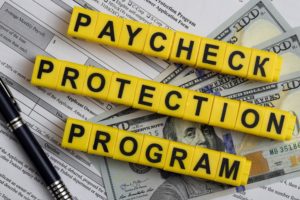 Latest COVID-19 Legislation Will Bring Much Needed Small Business Relief
Latest COVID-19 Legislation Will Bring Much Needed Small Business Relief
by Kimberly Ripberger
Nine months after the passage of the CARES Act, the long-awaited and much anticipated round of relief needed for our Country’s beleaguered small businesses will pass this week once it receives the President’s signature.
The Consolidated Appropriations Act of 2021 (“Act”) provides $284 billion to the Small Business Administration (“SBA”) for the first and second rounds of funding for the forgivable loans under the Paycheck Protection Program (“PPP”). The hardest hit PPP first-time recipients may apply for another loan up to $2 million if the recipients satisfy the following conditions:
1. Have 300 or fewer employees
2. Have used or will use the full amount of their first PPP Loan
3. Have sustained a 25% gross revenue loss in any quarter of 2020 with same corresponding quarter in 2019.
In addition, the Act includes eligible recipients of small 501(c)(6) business league organizations that have 300 or fewer employees and do not receive more than 15% of their receipts from lobbying activities, costing no more than $1 million during the most recent tax year ended prior to February 15, 2020.
The Act permits first-time PPP applicants from the following organizations:
1. Businesses with 500 or less employees
2. Sole proprietors, independent contractors, and eligible self-employed individuals
3. Not-for-profits including churches
4. Hotel and food service organizations (NAICS code starting with 72) with fewer than 300 employees per physical location.
Potential forgivable and eligible expenses under PPP continue to include payroll, rent, covered mortgage interest, and utilities. These are the same eligible expenses that existed for the first round of PPP funding. In addition, the second round of PPP funding broadens the forgivable and eligible expenses to include supplier costs and investments in facility modifications, software and cloud computing and accounting services, and personal protective equipment needed to operate safely in accordance with COVID-19 federal health and safety guidelines.
To be eligible for full forgiveness under the Paycheck Protection Program, borrowers will have to spend no less than 60% of the funds on payroll over a covered period of either 8 or 24 weeks. PPP borrowers may receive a loan in the amount of up to 2.5 times their average monthly payroll costs in the year prior to the loan or calendar year up to a maximum loan amount of $2 million. Hotel and restaurant PPP borrowers may receive a loan in the amount of up to 3.5 times their average monthly payroll costs in the year prior to the loan or calendar year up to a maximum loan amount of $2 million.
The long-awaited simplified loan forgiveness process for borrowers with PPP loans of $150,000 or less was included in the Act. The SBA must create the simplified forgiveness application within 24 days of the Act’s ratification. Another long-awaited provision is the repeal of the Economic Injury Disaster Loan advance from the PPP forgiveness amount.
Finally, the Act included set-asides to ensure that smaller borrowers and underserved communities receive much needed assistance, such as: for small businesses with 10 or fewer employees; for loans made by small community lenders, including Community Development Financial Institutions (CDFIs), credit unions, small community banks, Minority Depository Institutions (MDIs), and farm service lenders; and for the Minority Business Development Agency.
We will be continually monitoring additional guidance as it is released and will provide updated information on this page as it becomes available, so please check back often. In addition, please feel free to reach out to your BRC advisor with any questions you may have.

